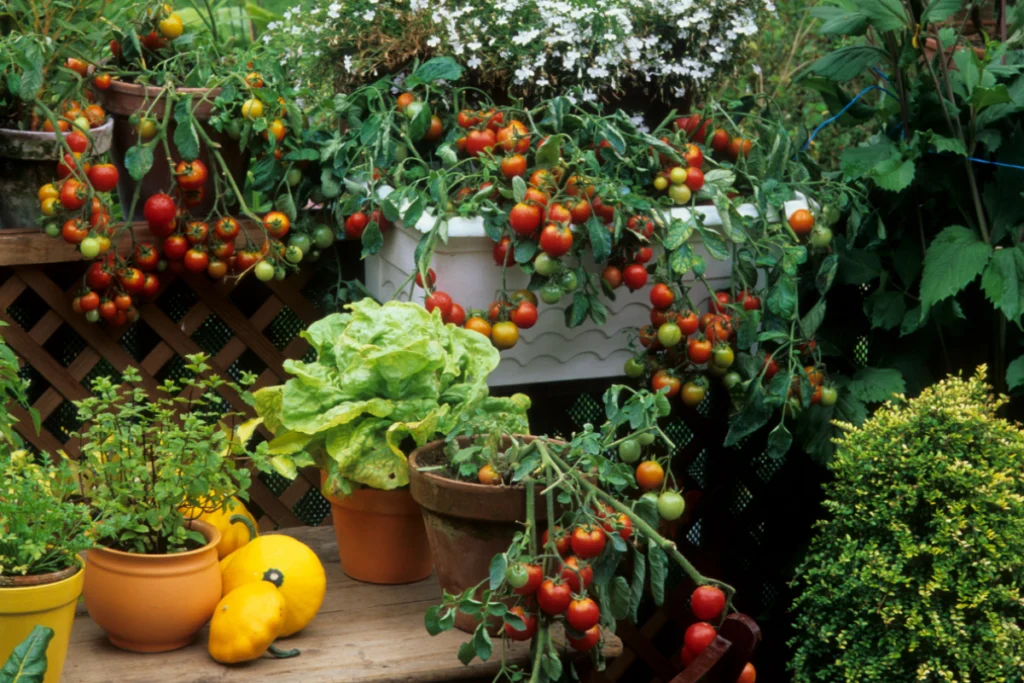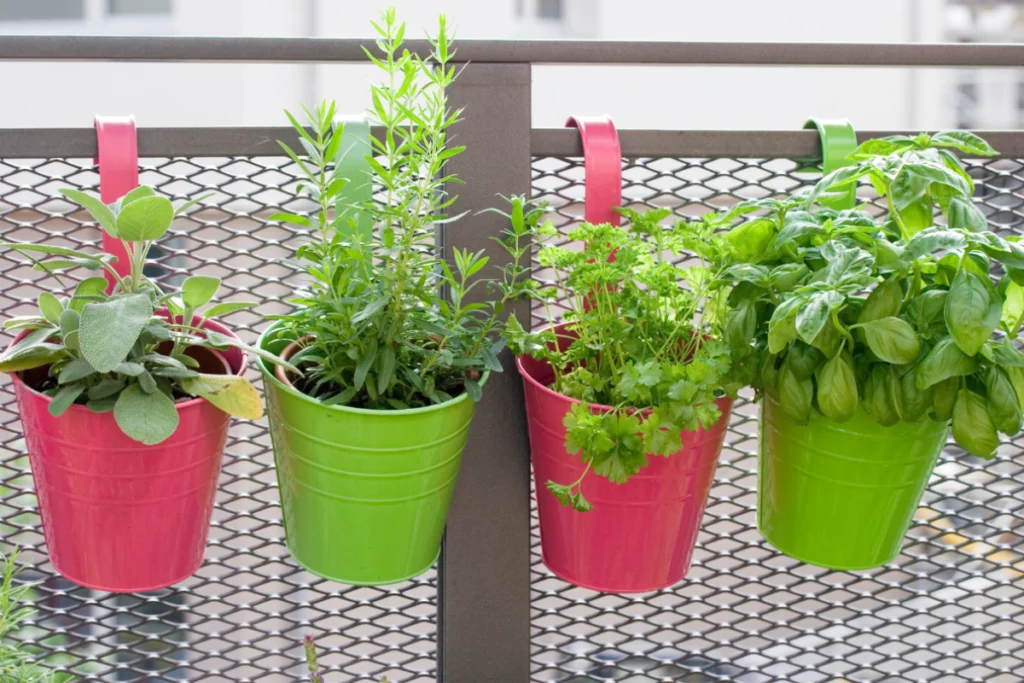Transform Your Balcony into a Green Retreat
Vertical gardening for apartment balconies is a revolutionary way to maximize space while enjoying the benefits of greenery, fresh produce, and aesthetic appeal.
With the right design, plants, and maintenance tips, even the smallest balcony can be transformed into a vibrant and functional garden.
Whether you’re looking to grow vegetables, herbs, or simply beautify your space, this guide will provide everything you need to get started.
Understand Your Limitations
Creating a vertical garden on your apartment balcony can be rewarding, but it’s essential to consider the restrictions that might impact your project. Before starting, check building regulations or landlord policies to ensure compliance.
Weight Restrictions
Balconies have weight limits, so it’s crucial to know how much weight yours can safely support. Heavy ceramic pots, wet soil, and large structures can quickly exceed capacity. Additionally, there may be rules about hanging items on railings or walls, so choose lightweight materials and distribute the load evenly to prevent damage.
Microclimate Factors
The environment of your balcony will significantly influence plant selection and care:
- Sunlight: The amount of direct sunlight is vital. Urban balconies often face shade from surrounding buildings, so place sun-loving plants near the edges where sunlight is strongest.
- Wind: Strong winds, common in high-rise balconies, can dry out soil, damage delicate plants, and knock over tall pots. Use windbreaks like privacy screens or position fragile plants in low, sturdy pots near walls for added protection.
- Heat: Reflected sunlight from windows can intensify heat, scorching sensitive foliage. The type of balcony material, like concrete or wood, also affects heat retention and plant health.
- Shade: For shaded balconies, select plants that thrive in low light, and experiment with reflective surfaces to maximize available sunlight.
Practical Tips
- Use lightweight containers and vertical garden systems to reduce strain on the structure.
- Anchor trellises or planters securely to avoid accidents caused by wind or instability.
- Select hardy plants suited to your balcony’s specific conditions, such as wind-tolerant or heat-resistant species.
By understanding your balcony’s limitations and adapting your garden design accordingly, you can create a beautiful and thriving vertical garden that complements your space safely and efficiently.
Why Choose Vertical Gardening for Apartment Balconies?

Vertical gardening is ideal for apartment balconies due to its efficiency and versatility. Here’s why it’s worth considering:
- Maximized Space: Vertical gardening utilizes walls, railings, and other upright surfaces, leaving your balcony floor free for furniture or other uses.
- Fresh Produce: Enjoy homegrown herbs, vegetables, and fruits without the need for a backyard.
- Improved Air Quality: Plants help purify the air and create a healthier living environment.
- Aesthetic Value: Vertical gardens bring greenery and life, enhancing the overall ambiance of your balcony.
- Eco-Friendly Practices: Reduce your environmental impact by growing your own food and recycling materials for garden structures.
Step 1: Planning Your Vertical Balcony Garden
Planning is the key to a successful vertical garden. Follow these steps to ensure your balcony garden thrives:
Assess Your Space
- Measure the Balcony: Understand how much space is available for planters, wall mounts, and other structures.
- Sunlight: Identify areas that receive direct sunlight, partial shade, or low light, and choose plants accordingly.
- Weight Limits: If you live in an apartment, ensure the balcony can support the weight of your garden. Lightweight materials like plastic or fabric planters are great options.
Define Your Purpose
- Herbs and Vegetables: Grow basil, mint, cherry tomatoes, or lettuce for easy access to fresh ingredients.
- Ornamental Plants: Use flowering plants or cascading ivy to beautify your balcony.
- Privacy Screen: Create a natural barrier with dense climbing plants like jasmine or morning glory.
Step 2: Choosing the Right Vertical Garden Structure
The structure you choose should fit your balcony’s size, design, and your personal goals. Here are some options:
Wall-Mounted Planters:
- Attach felt pockets, wooden panels, or metal frames to a wall to create a vertical garden.
- Great for herbs, succulents, and small flowering plants.
Hanging Planters:
- Suspend small pots or baskets from balcony railings or ceiling hooks for cascading greenery.
- Perfect for cascading plants such as pothos or ivy.
Freestanding Shelves or Racks:
- Use tiered racks or shelves for a movable, flexible vertical garden.
- Perfect for balconies that don’t allow drilling into walls.
DIY Recycled Options:
- Repurpose materials like wooden pallets, plastic bottles, or old shoe organizers to create unique, eco-friendly garden structures.
Step 3: Selecting the Best Plants for Vertical Gardening

Choosing plants that suit your space and light conditions is crucial. Here are some suggestions:
Edible Plants:
- Herbs: Basil, parsley, thyme, mint, oregano.
- Vegetables: Cherry tomatoes, peppers, lettuce, kale, spinach.
- Fruits: Strawberries, dwarf citrus trees.
Ornamental Plants:
- Low-Light Plants: Snake plant, pothos, peace lily.
- Climbing Plants: Jasmine, morning glory, ivy.
- Flowers: Petunias, marigolds, geraniums.
Pro Tip: Combine fast-growing plants with slower ones for a constantly lush look.
Step 4: Setting Up Your Vertical Garden
Here’s a step-by-step guide to creating your vertical garden:
- Prepare the Structure: Securely install your planters, racks, or wall panels. Ensure proper drainage to prevent waterlogging.
- Use the Right Soil: Lightweight, well-draining potting soil enriched with compost or organic fertilizer works best.
- Plant Placement: Arrange plants based on their light requirements, placing sun-loving plants higher up and shade-tolerant ones lower.
- Install Irrigation: Use drip irrigation or self-watering pots to reduce the need for manual watering.
Step 5: Maintaining Your Balcony Garden
A vertical garden requires regular care to thrive. Here’s how to keep yours healthy:
- Watering: Keep the soil moist but not soggy. To minimize water loss, water your plants early in the morning or late in the day.
- Pruning: Remove dead leaves, stems, and flowers to encourage new growth.
- Fertilizing: Feed plants with a balanced liquid fertilizer every 4–6 weeks.
- Pest Control: Inspect plants for pests like aphids or spider mites. Opt for natural repellents such as neem oil or diatomaceous earth.
- Cleaning: Remove debris and wipe down planters to keep the garden tidy and mold-free.
Creative Vertical Gardening Ideas for Balconies

Get inspired with these creative ideas for your vertical balcony garden:
- Herb Wall Garden: Create a living wall of herbs like basil, thyme, and parsley for a functional and aromatic garden.
- Privacy Screen: Use climbing plants like jasmine or ivy to create a natural green barrier.
- Recycled Planters: Repurpose old jars, bottles, or pallets for a budget-friendly garden.
- Hanging Vegetable Baskets: Grow cherry tomatoes, strawberries, or peppers in hanging baskets.
- Colorful Flower Wall: Use vibrant flowering plants like petunias or marigolds for a stunning visual effect.
“Want more ideas for your vertical garden? This video highlights 50 amazing designs to help you transform your balcony into a green paradise:”
Frequently Asked Questions (FAQ)
1. Can I grow vegetables on my balcony?
Yes, vegetables like cherry tomatoes, peppers, lettuce, and kale thrive in vertical gardens, even on small balconies.
2. How much sunlight do balcony plants need?
Most plants need 4–6 hours of sunlight daily. For shaded balconies, choose low-light plants like pothos or ferns.
3. How do I prevent overwatering?
Ensure proper drainage in your planters and only water when the top inch of soil feels dry.
4. Are vertical gardens easy to maintain?
Yes, with the right plants, irrigation, and minimal pruning, vertical gardens require very little effort to maintain.
5. Can I use recycled materials for my vertical garden?
Absolutely! Wooden pallets, plastic bottles, and old furniture can all be repurposed into creative garden structures.
For more tips on using recycled materials, check out our article: Building Vertical Gardens with Recycled Materials.
Conclusion: Create Your Balcony Oasis
Vertical gardening for apartment balconies is a practical and beautiful way to maximize your space and bring nature closer to home. With the right structure, plants, and care, you can transform even the smallest balcony into a lush, green retreat.
Start your vertical garden today and enjoy the benefits of fresh produce, improved air quality, and a stunning outdoor space.
Share your progress with friends and inspire others to embrace the beauty of vertical gardening!
For more insights on urban gardening, visit this comprehensive guide.

